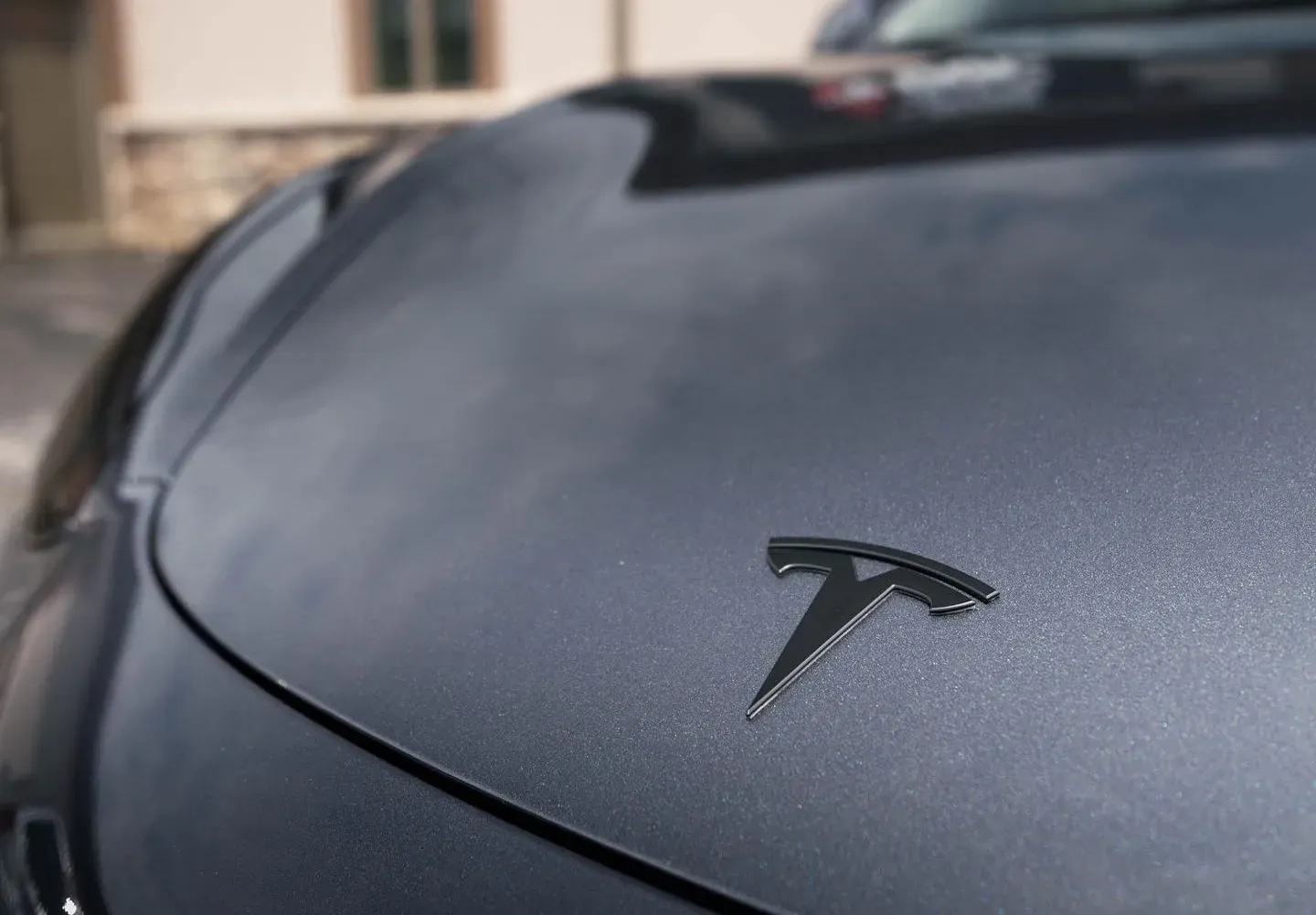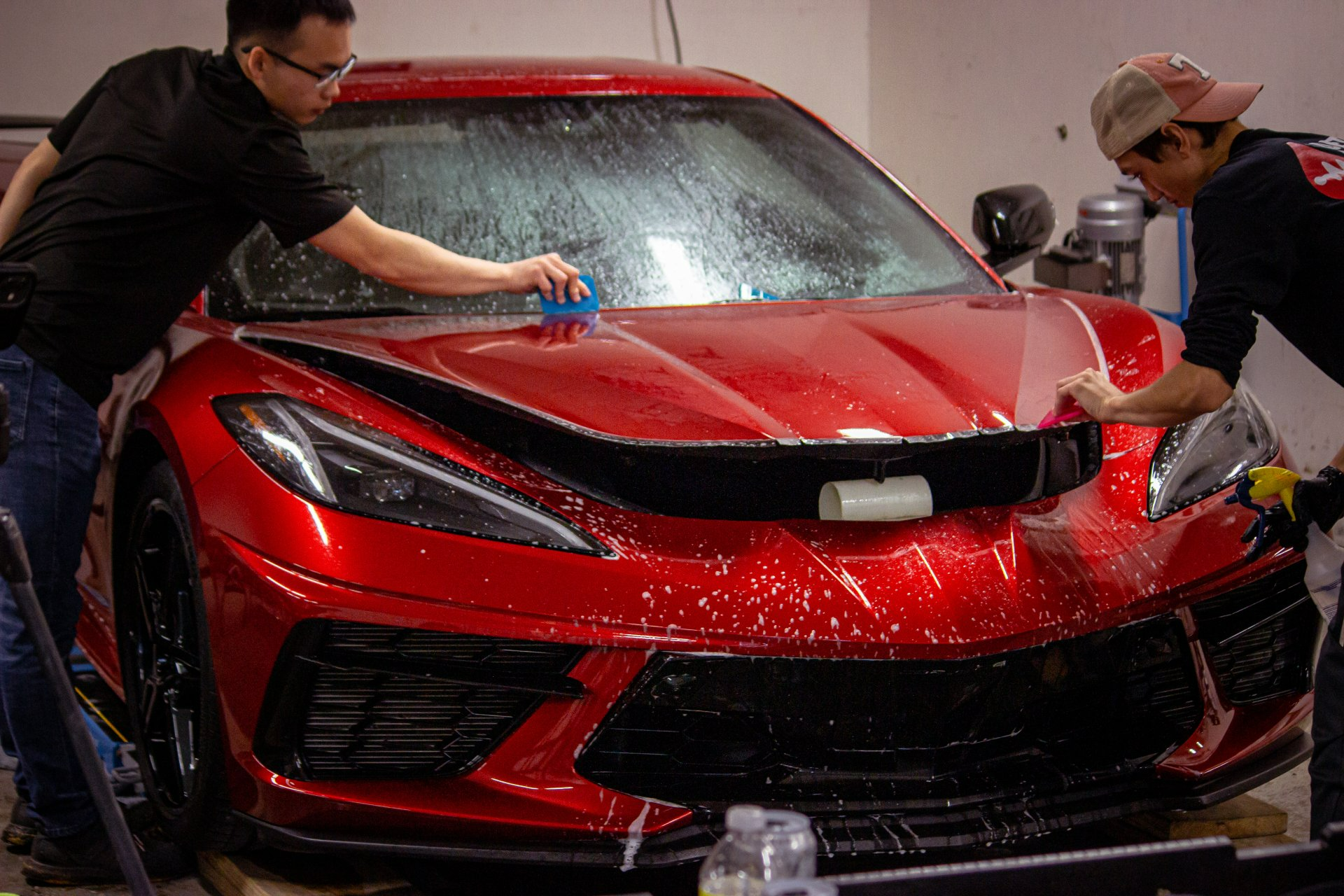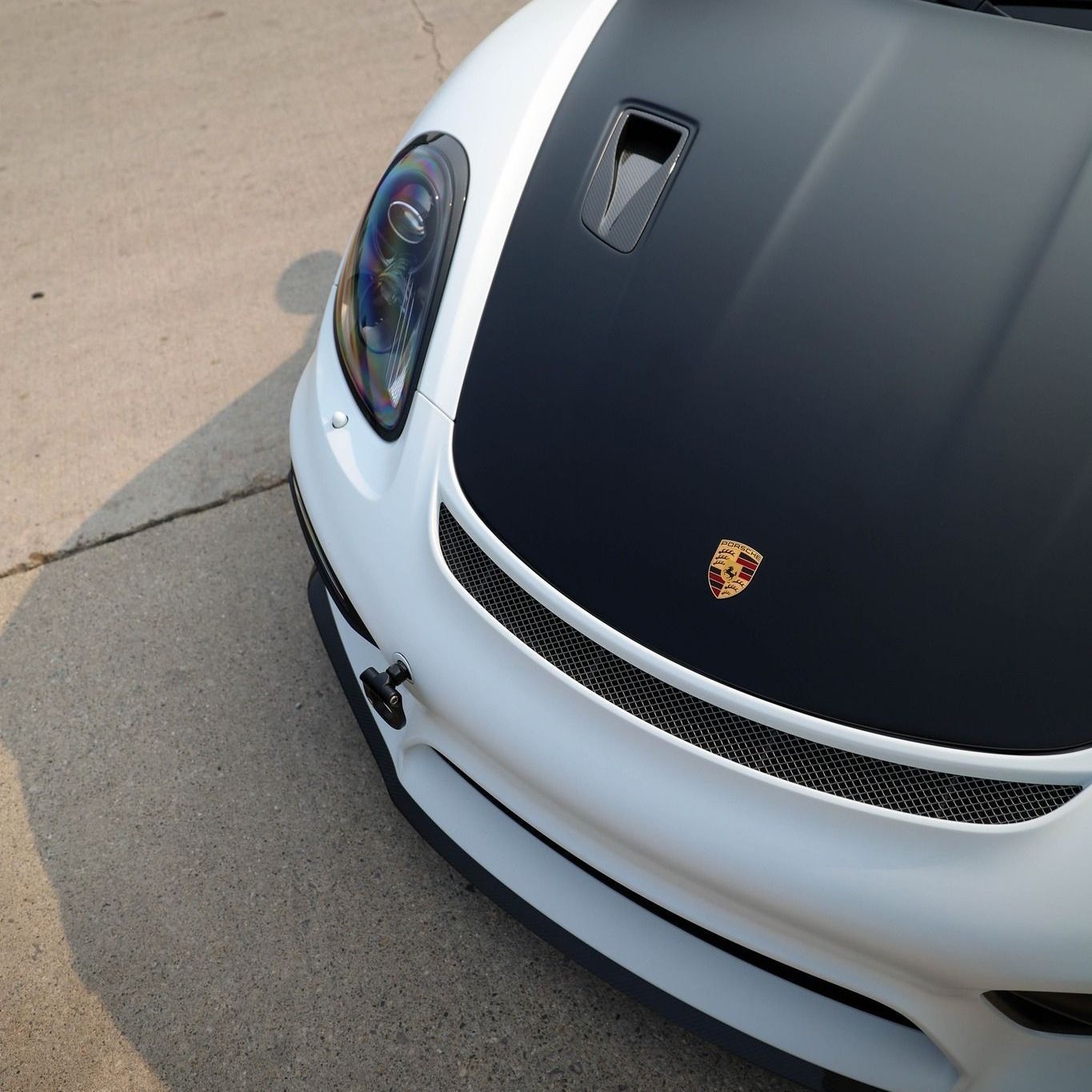The Detail Doc Blog
Types of Paint Protection Film: A Comprehensive Guide to Different Options
(989) 244-0505 GET SCHEDULED NOWCar paint protection films come in different types, such as Instant Healing, Self Healing, and Entry Level. These films provide varying levels of protection against chips, scratches, UV rays, and discoloration. When considering paint protection film for your vehicle, it's crucial to consult with a professional to determine the best option based on your specific needs and preferences. Let’s discuss the different types of paint protection film for cars!
COMMON TYPES OF PAINT PROTECTION FILM for cars
Car paint protection films come in various types, each with a unique set of benefits and features. Let's explore some of the most common ones:
INSTANT HEALING FILMS
Instant healing films are designed with advanced nanotechnology that allows them to heal instantly from scratches and dings when exposed to heat. These films have special properties that enable them to reform and repair themselves in response to heat, making minor imperfections disappear. Imagine having a scratch on your car vanish before your eyes simply because of the sun's warmth!
SELF-HEALING FILMS
Self-healing films are formulated with strong top coatings that offer protection against chips, scratches, and UV rays. The marvel of self-healing films lies in their ability to repair minor scratches and swirl marks when heat is applied. This means that small blemishes on your car's surface can disappear when exposed to heat! It's like magic, but it's the result of innovative technology at work.
ENTRY LEVEL FILMS
Entry-level films are the traditional and older formulas without UV protection. While they do offer basic protection from road debris and minor abrasions, they lack the self-healing properties found in newer films. They are a great option for those seeking standard protection without the extra frills of self-healing capabilities.
Some may argue that while self-healing PPF offers remarkable benefits in terms of scratch repair, entry-level films still provide valuable protection for everyday driving. It all comes down to personal preference and the level of maintenance you want for your vehicle.
Understanding the differences between these common types of car paint protection films will help you make an informed decision when choosing the best option for your vehicle's needs. Each type offers its advantages, so it's important to weigh them against your specific requirements and preferences before making a selection.
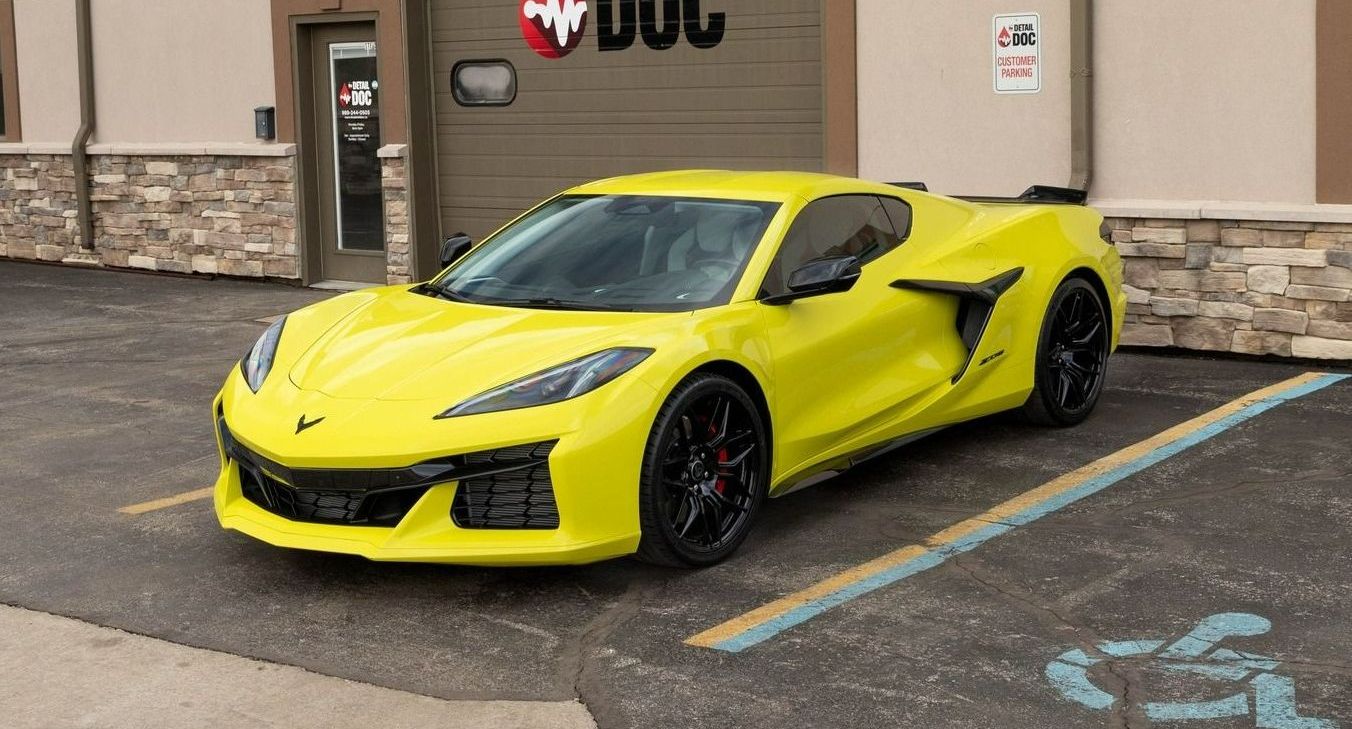
Top Materials in Paint Protection Film
When it comes to protecting your car's paint, you want the best materials available. Two of the top materials used in paint protection films are Polyurethane and TPU (Thermoplastic Polyurethane).
Polyurethane
Polyurethane is a go-to material for high-quality paint protection films due to its exceptional durability and optical clarity. The film's ability to withstand environmental elements while maintaining a clear, glossy appearance makes it a popular choice among car enthusiasts and professionals alike. Because of its outstanding protective properties, polyurethane can shield your vehicle's paint from road debris, scratches, and small impacts without compromising its aesthetic appeal. This material not only maintains the original color and shine of the vehicle but also provides enhanced UV resistance to prevent premature fading.
TPU (Thermoplastic Polyurethane)
TPU films represent a newer and alternative option that has gained popularity in the automotive industry. Similar to traditional polyurethane films, TPU offers robust protection against physical damage while possessing self-healing capabilities. This means that minor scratches and scuffs on the film can be mended with exposure to heat or sunlight, keeping the surface looking smooth and flawless over time.
Additionally, TPU films retain flexibility and elasticity, which allows for easier installation on curved or complex surfaces. The ability of TPU to conform seamlessly to various contours and edges results in a sleek and inconspicuous finish once applied to the vehicle.
Understanding the top materials used in paint protection films empowers car owners to make informed decisions about safeguarding their vehicle's exterior. With both polyurethane and TPU offering outstanding protective qualities, selecting between them ultimately depends on individual preferences and specific requirements.
By choosing the right material for your paint protection film, you are investing in the long-term beauty and preservation of your vehicle.
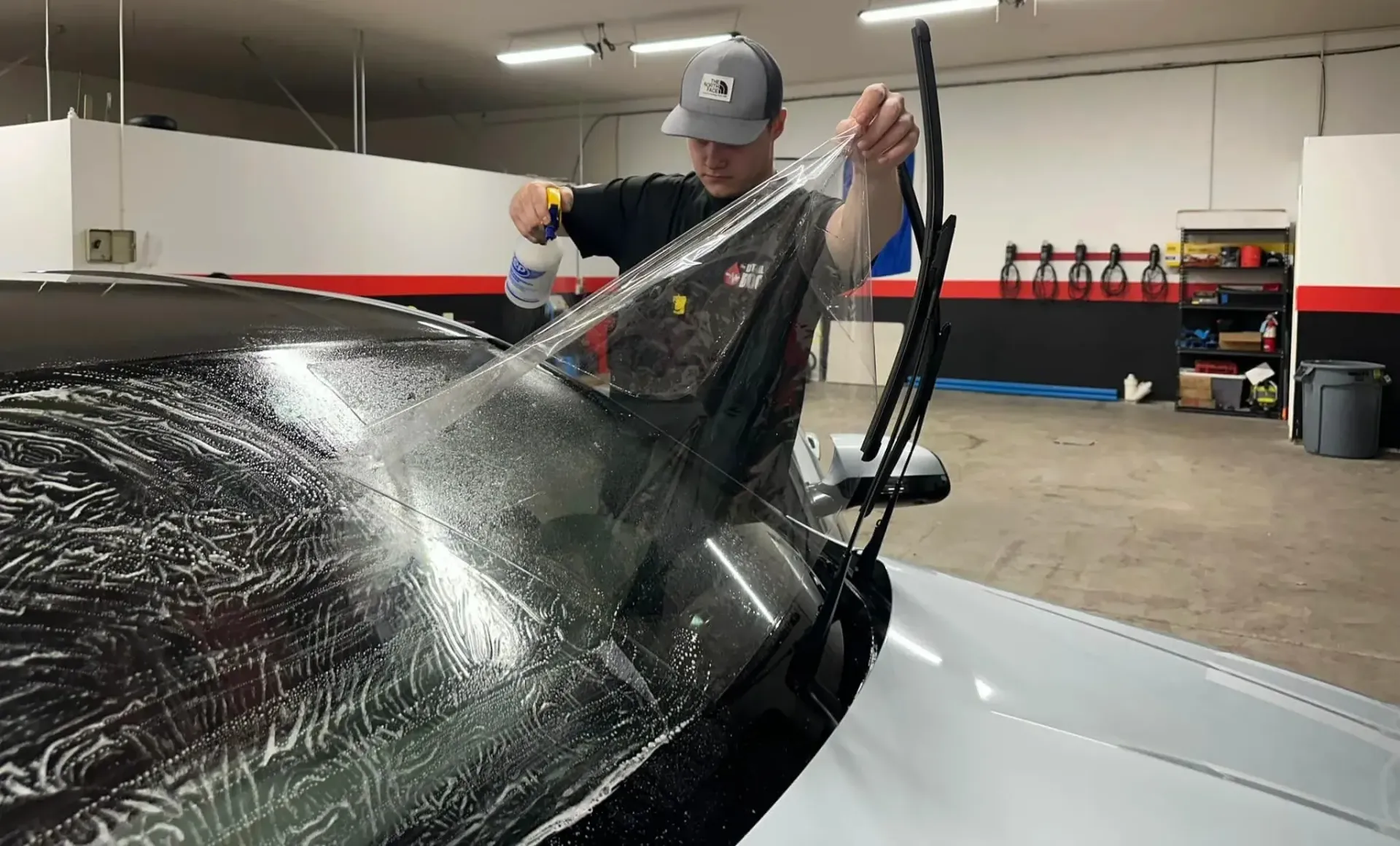
Leading PPF Manufacturers in the Industry
When it comes to protecting your vehicle's paint from chips, scratches, and other damage, you want to ensure that you're using a high-quality product. That's where leading manufacturers like STEK, XPEL, and 3M come into play. Let's take a closer look at what makes them stand out in the paint protection film industry.
STEK
STEK stands out in the paint protection film industry with innovative products designed to offer optimal protection for vehicles. Their PPFs boast cutting-edge features like self-healing technology, which enables minor scratches or blemishes on their own to heal on their own over time, maintaining your vehicle's pristine appearance despite wear and tear.
STEK paint protection films offer more than self-healing properties; they also boast exceptional clarity that allows the true hue and sheen of your vehicle's paint surface to show through. Thanks to this optical clarity, these films seamlessly integrate with their surface for virtually invisible protection.
STEK emphasizes impact resistance when designing its PPFs, using durable materials that can effectively protect your vehicle against rocks, debris, and other environmental hazards that could otherwise cause chips, scratches, and other forms of damage that detract from its appearance. This ensures your paint stays pristine without chips, scratches, or other signs of wear that could damage its look.
XPEL
XPEL is renowned for its high-quality PPFs that offer exceptional clarity and durability, allowing your vehicle's paint to shine through without any distortion. The self-healing properties of XPEL's films are particularly noteworthy, as they can absorb minor scratches and marks, effectively maintaining the pristine appearance of your vehicle. This means that small imperfections simply disappear, thanks to the film's ability to "heal" itself under the right conditions.
Furthermore, XPEL uses advanced elastomeric polymer technology, which provides excellent impact resistance to shield your vehicle from road debris, bug acids, and other environmental elements. This not only protects the aesthetics of your car but also helps maintain its resale value by preserving the original paint finish underneath.
3M
3M is another prominent player in the paint protection film industry, offering a diverse range of protective films designed to safeguard vehicles from external hazards. Known for its commitment to innovation and quality, 3M has developed PPFs that excel in providing robust protection against rock chips, scratches, and physical damage while maintaining optical clarity.
One of the standout features of 3M's paint protection films is their ability to absorb impacts and resist tearing, ensuring comprehensive coverage for your vehicle's delicate surfaces. This level of protection extends the life of your vehicle's paint job, shielding it from the wear and tear of daily driving and enhancing its overall longevity.
Stek, XPEL, and 3M have solidified their positions as leaders in the industry by consistently delivering reliable and top-quality products that cater to the diverse protective needs of vehicle owners. Their dedication to craftsmanship, technological advancements, and performance has earned them widespread recognition among automotive enthusiasts and detailing professionals alike.
Innovative Technologies Behind Paint Protection Film
When you decide to invest in paint protection film (PPF), you want to ensure it offers more than just a physical barrier against scratches and chips. The effectiveness of modern PPF lies in the incorporation of innovative technologies. Let's explore two of the most important technological features.
Self-Healing Properties
One of the most remarkable advancements in PPF technology is its ability to "heal" from minor scratches and swirl marks. This is made possible through advanced top coatings and nanotechnology. When the film is exposed to heat, these properties enable it to mend itself, erasing imperfections and maintaining a flawless appearance. It's almost like magic for your car! This feature is especially valuable in ensuring that your vehicle maintains a smooth, unblemished surface over time.
Hydrophobic Properties
In addition to self-healing properties, many paint protection films feature hydrophobic (water-repellent) top coats. These coatings repel water and prevent it from sticking to the surface, making the film easier to clean and maintain. Imagine raindrops effortlessly rolling off your car's exterior, leaving it clean. This feature not only keeps your vehicle looking sleek but also reduces the effort required for regular cleaning and maintenance.
For instance, when you have a hydrophobic coating on your PPF, dirt and dust have a harder time sticking to the surface. This means your car will stay cleaner for longer periods, reducing the frequency of washes needed and helping preserve the lifespan of the protective film.
This combination of self-healing and hydrophobic properties sets modern PPF apart as an advanced solution for preserving your vehicle's paintwork. It provides long-lasting protection while minimizing the effort needed to keep your car looking its best.
Understanding these innovative technologies offers insight into the advanced capabilities of contemporary paint protection films, ensuring that your vehicle remains in top condition with minimal upkeep.
Final Words
When choosing the best paint protection film for your vehicle, you must consider its quality, durability, and performance. While many options exist on the market, STEK paint protection film stands out as the premier solution for car owners looking for peace of mind. STEK provides unmatched protection for the paint of your vehicle with its advanced features, such as self-healing technology, exceptional clarity, and superior impact resistance.
No matter the condition of your car, STEK PPFs provide reliable protection from rock chips, scratches, and environmental hazards. Don't compromise the quality of its protection--choose STEK paint protection film for unmatched performance and durability!
When considering the installation of your car's paint protection film (PPF), always seek professional installation for optimal results. To learn more about our services or
schedule an appointment, visit
The Detail Doc today.


